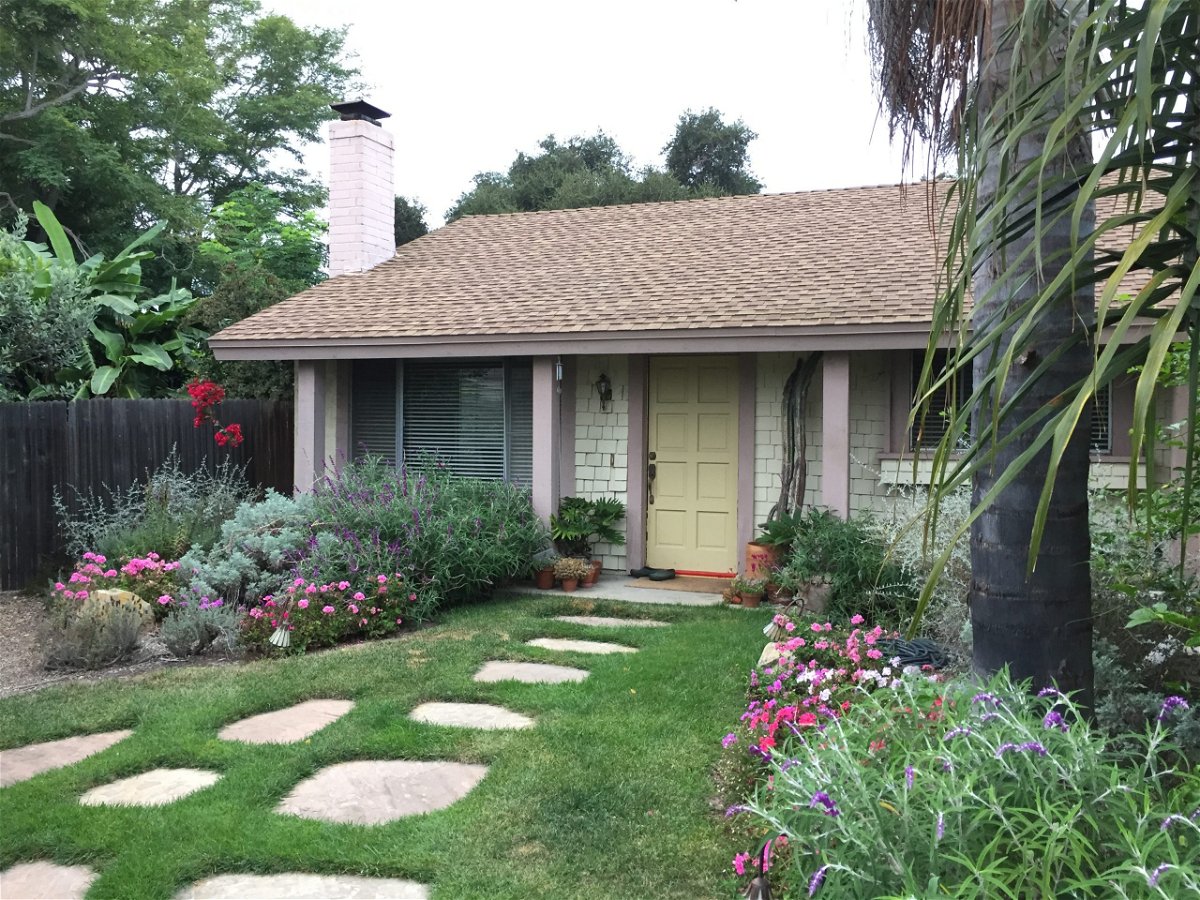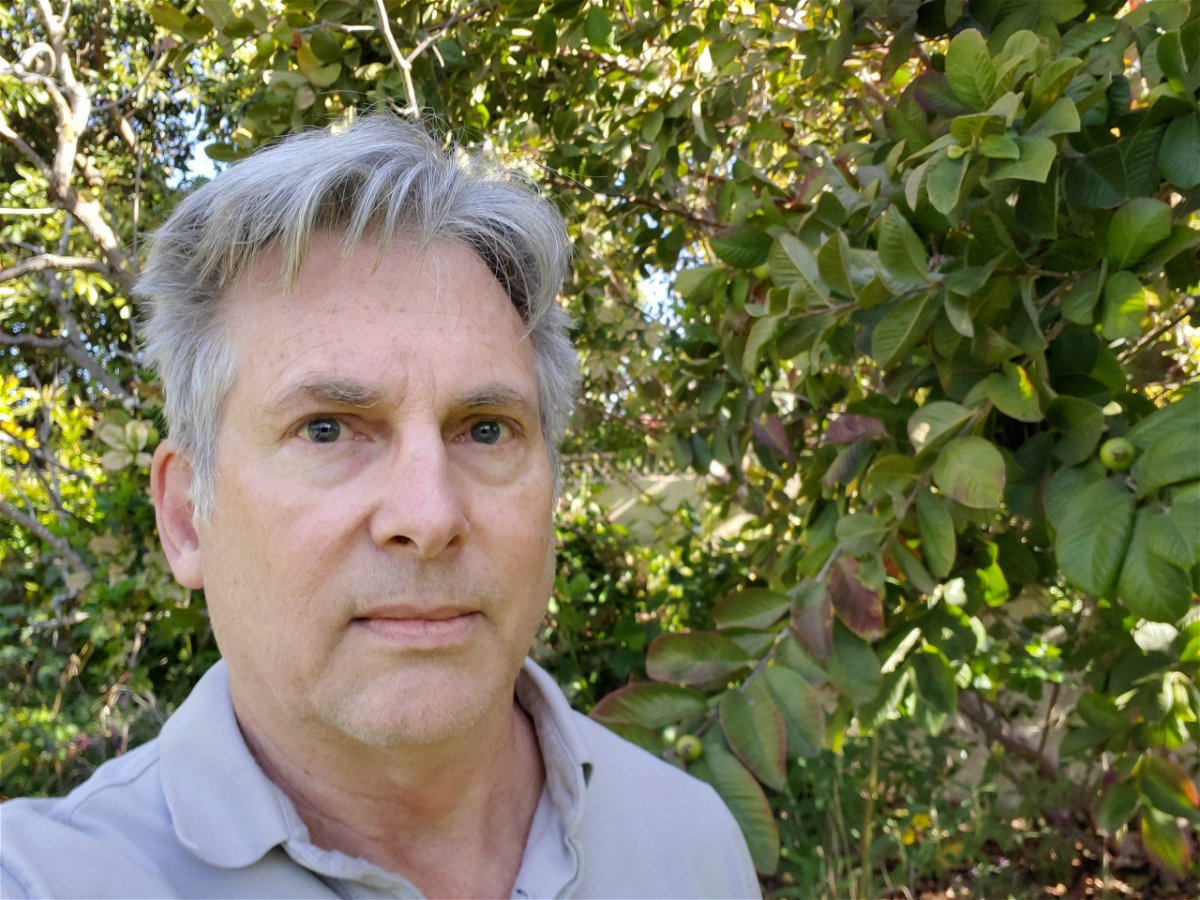Carpinteria cannabis plaintiffs sell home next to greenhouse operation
Ever-Bloom pot operation was fouling the air, they say.
CARPINTERIA, Calif. - Greg and Marllus Gandrud, who are suing five cannabis greenhouse operations on Foothill Road in Carpinteria, have fled the neighborhood and sold their home after nearly three years of trying, off and on.
The stench of pot would regularly hit them at dinnertime in their four-bedroom house at 1493 Chaparral Drive, Greg Gandrud said. But he believes it was the vapor system at Ever-Bloom, Inc., directly behind the couple’s backyard, that was exacerbating Marllus’ asthma to the point where he had trouble breathing and was wheezing all the time.
Cannabis growers throughout the Carpinteria Valley use perforated pipes attached to the exterior walls of their greenhouses to release a non-toxic “curtain” of plant oils mixed with water into the air. These vapor systems are designed to neutralize the “skunky” smell of marijuana with a lemony or piney smell. Yet despite assurances from the system manufacturer that the emissions are harmless, some Carpinterians are convinced they are not.
“We’ve been really desperate to get out of the house,” said Gandrud, who is a tax accountant, former city councilman and current treasurer of the California Republican Party. “We had no choice but to move. Our bedroom window was only 80 feet from the pipe that sprays those chemicals, 24/7.”

A year ago, the Gandruds, joined by Paul Ekstrom, a resident of Manzanita Street, one of five cul-de-sacs, including Chapparral, that border on Ever-Bloom; and the Santa Barbara County Coalition for Responsible Cannabis, a nonprofit group, filed a lawsuit against businesses owned by members of the Van Wingerden family, alleging that their cannabis greenhouses at 4555 and 4587 Foothill, and at 4701 Foothill, where Ever-Bloom is located, were creating “an ever-present noxious odor in their homes and neighborhood.”
“We told them, ‘Our lawsuit will go away if you can prove you’ve made efforts to make it easier to live next to this cannabis grow,’” Gandrud said. “We know cannabis is here in Carpinteria to stay. We want them to be good neighbors with people who were living there before cannabis was even growing. We’re not going to stop fighting this.”
New technology
Ed Van Wingerden, the owner of Ever-Bloom, declined to comment on the lawsuit last week, and the family’s attorney in the lawsuit, Mike Williams of San Clemente, did not return a reporter’s calls. But Robert Curtis of Santa Barbara, the Gandruds’ attorney, said the coalition has been in negotiations with Williams for months, trying to reach a settlement. Ed Van Wingerden, he said, has been recently testing some expensive carbon air filtration systems at Ever-Bloom, called “scrubbers,” that are designed to reduce the smell of pot and the need for vapor control at cannabis greenhouses.
“We’re not sure that carbon scrubbing will work,” Curtis said. “The problem is that the greenhouses are not sealed.”
To date, only two Carpinteria Valley growers – Cindy and David Van Wingerden at CVW Organic Farms on Cravens Lane, who are not defendants in the lawsuit – have committed to using such scrubbers in their greenhouses; their proposal for eight acres of cannabis cultivation has been approved next to the city limits, but it is not yet up and running.
Meanwhile, escrow closed on Tuesday at the Gandruds’ home on a quarter-acre on Chapparral. They sold it for $975,000 to Aa couple who live in a condo across the street with their two small children; the couple had admired the Gandruds’ light and airy house and their large lot with 25 fruit trees. Greg believes he may have lost as much as $60,000 on the sale, but he’s relieved: a previous escrow fell through after the prospective buyers went door-to-door in the neighborhood.

“It was quite an ordeal, trying to sell that house,” Gandrud said.
Since January, the Gandruds have been renting a two-bedroom condo on Catlin Circle, just four blocks south of Chapparral and nearer the ocean. The air smells “perfect” and Marllus is breathing easy again, Greg said, adding: “I’d love to stay in Carpinteria, but we can’t be anywhere near that pot.”
In the pipeline
Ever-Bloom is one of nearly 40 cannabis projects under cultivation or in the pipeline for county review in the Carpinteria Valley, representing 222 acres of cannabis: the region is a mecca for the lucrative crop. (The county will cap cultivation in the valley at 186 acres.)
Since June 2018, Carpinteria residents have filed more than 800 odor complaints with the county regarding the cannabis industry at their doorstep. Among the “hot spots” that residents complain most about is the stretch of Foothill between Nidever and Cravens roads, where Ever-Bloom and other Van Wingerden operations named in the Gandruds’ lawsuit are located.
At Ever-Bloom, Ed Van Wingerden is seeking county zoning permits for 11 acres of cannabis currently under cultivation in former flower greenhouses.
Under county regulations, greenhouses and their accessory buildings cannot cover more than 65 percent of Van Wingerden’s 18-acre lot at 4701 Foothill. To meet that standard, Van Wingerden is proposing to merge that lot with an adjacent five-acre lot at 1495 Sterling Ave. (No cannabis is proposed for the greenhouses there.)

At a hearing on Ever-Bloom before the Board of Architectural Review on Friday, county planners repeatedly admonished the public to keep to the subject immediately at hand – aesthetics and landscape screening. But in letters and oral comments, residents talked about their migraines and said they had been “inundated with odors” night and day in the vicinity of Ever-Bloom.
Several commenters said they wanted state-of-the-art odor controls, sealed greenhouses and larger setbacks between the Ever-Bloom greenhouses and nearby homes. The setbacks are presently smaller than the present-day standard of 100 feet; but the greenhouses, most of them built decades ago, are designated as “legal and non-conforming.”
“Clearly there has been NO effective solution for the cannabis stench, and that stench is at the very heart of this proposal … it stinks,” wrote Robert and Jody Rodd, who live on Meadow Circle, just east of Ever-Bloom.
Unpermitted greenhouses
Other critics took note of the illegal buildings at Ever-Bloom – about 32,000 square feet of greenhouses constructed without permits, plus another 10,000 square feet of illegal water tanks, offices, utility rooms, restrooms, a two-car garage and portions of a loading dock.
That’s less than 10 percent of the buildings at Ever-Bloom. But throughout the western valley, where the greenhouse industry is most heavily concentrated, city officials estimate that fully one-quarter of the greenhouses were built without permits, based on a comparison of county records and Google Earth aerial photos.
As a recent example, CVW Organic Farms was found during county review to have 104,000 square feet of unpermitted greenhouses – 30 percent of the greenhouses on the property.
Beginning in the 1960s, the money crop in the valley was cut flowers; over the decades, the region was known for its greenhouse carnations, Gerbera daisies, roses and chrysanthemums. The greenhouse owners now growing cannabis have not been penalized for adding structures without permits over the years; county planners regard the current permitting process as a means of bringing them into compliance with modern regulations. But some residents say there should be consequences.
“This is a big concern, that there are no repercussions, not even fines for those who have violated the rules,” Anna Carrillo, a coalition member, wrote to the board.

As part of the Ever-Bloom project, Van Wingerden is proposing to demolish 4,100 square feet of illegal greenhouses at the southwest corner of the property near Chapparral Drive – just enough to provide a 120-foot setback from homes where there is currently only a 70-foot setback.
At Friday’s hearing, Anna Carrillo said Van Wingerden should be required to remove the same greenhouse square footage along all five of the residential cul-de-sacs that abut Ever-Bloom.
Joseph Dargel, a supervising county planner, again reminded the public: “This board is an aesthetics review board. That’s what the board is going to be focused on today.”
In a letter, city officials said more landscaping was “sorely needed” around the Sterling Avenue lot, where non-cannabis greenhouses are visible from both Franklin Creek Park and the Franklin Creek Bike Path. The review board ordered Van Wingerden’s team to return a third time with a revamped landscape plan for Ever-Bloom, one that could provide a “green wall” and “instant screening” between the greenhouses and residential neighborhoods.
Melinda Burns volunteers as a freelance journalist in Santa Barbara as a community service; she offers her news reports to multiple local publications, at the same time, for free.
